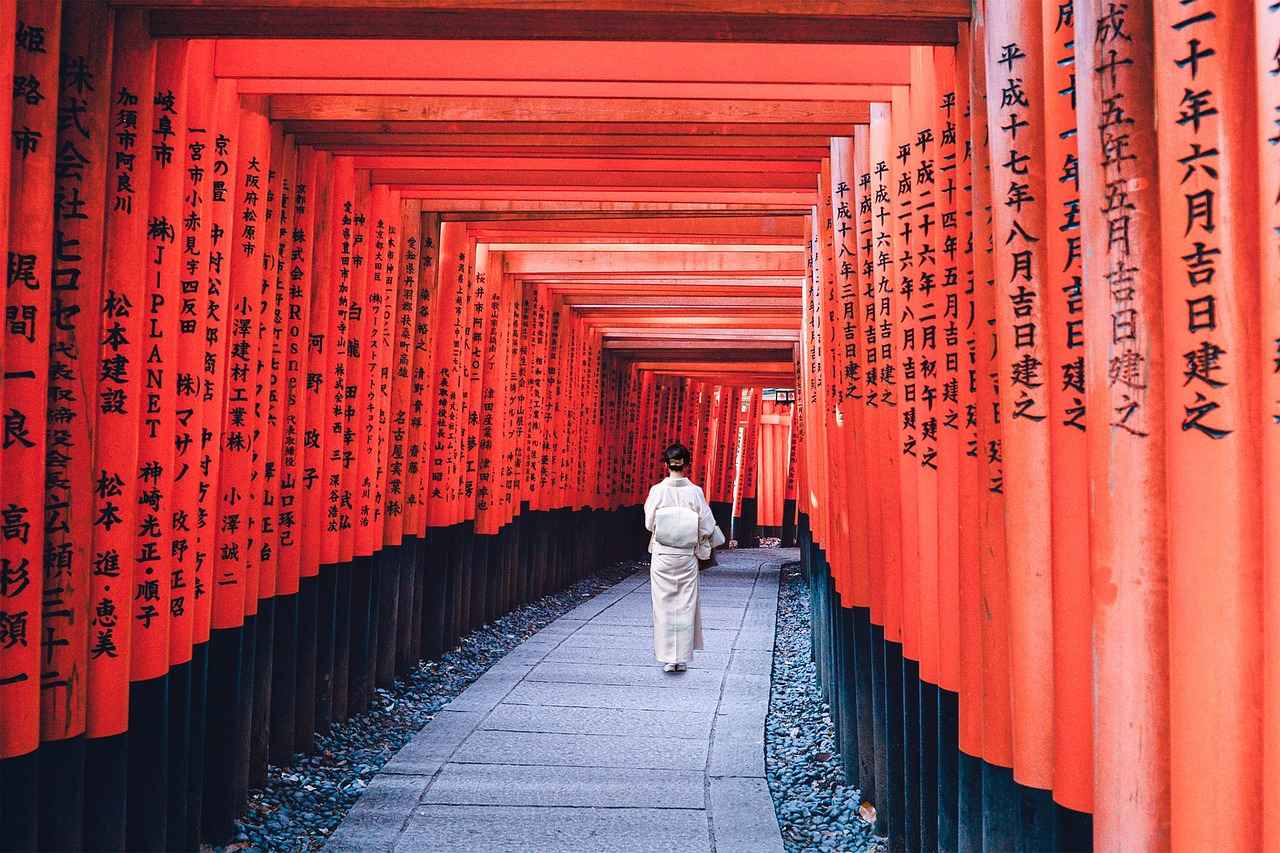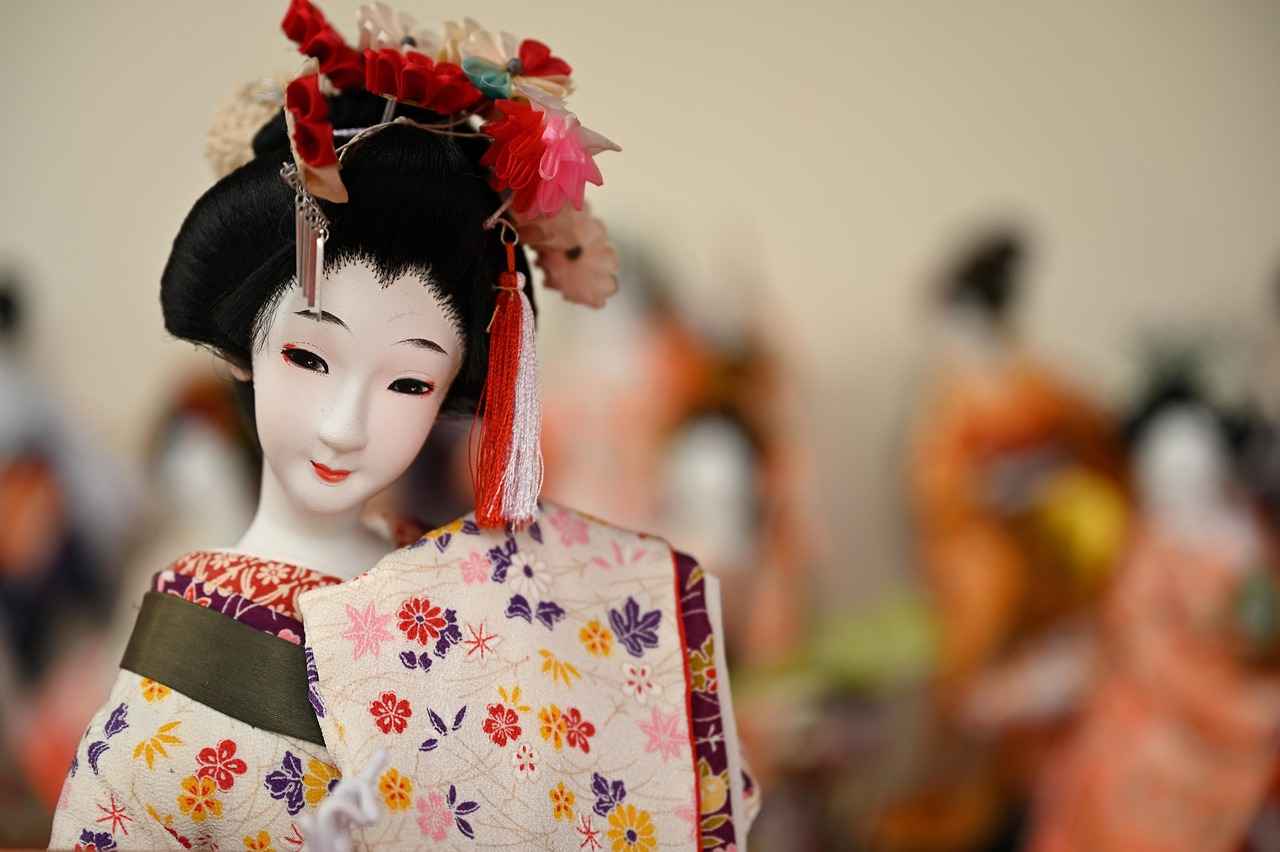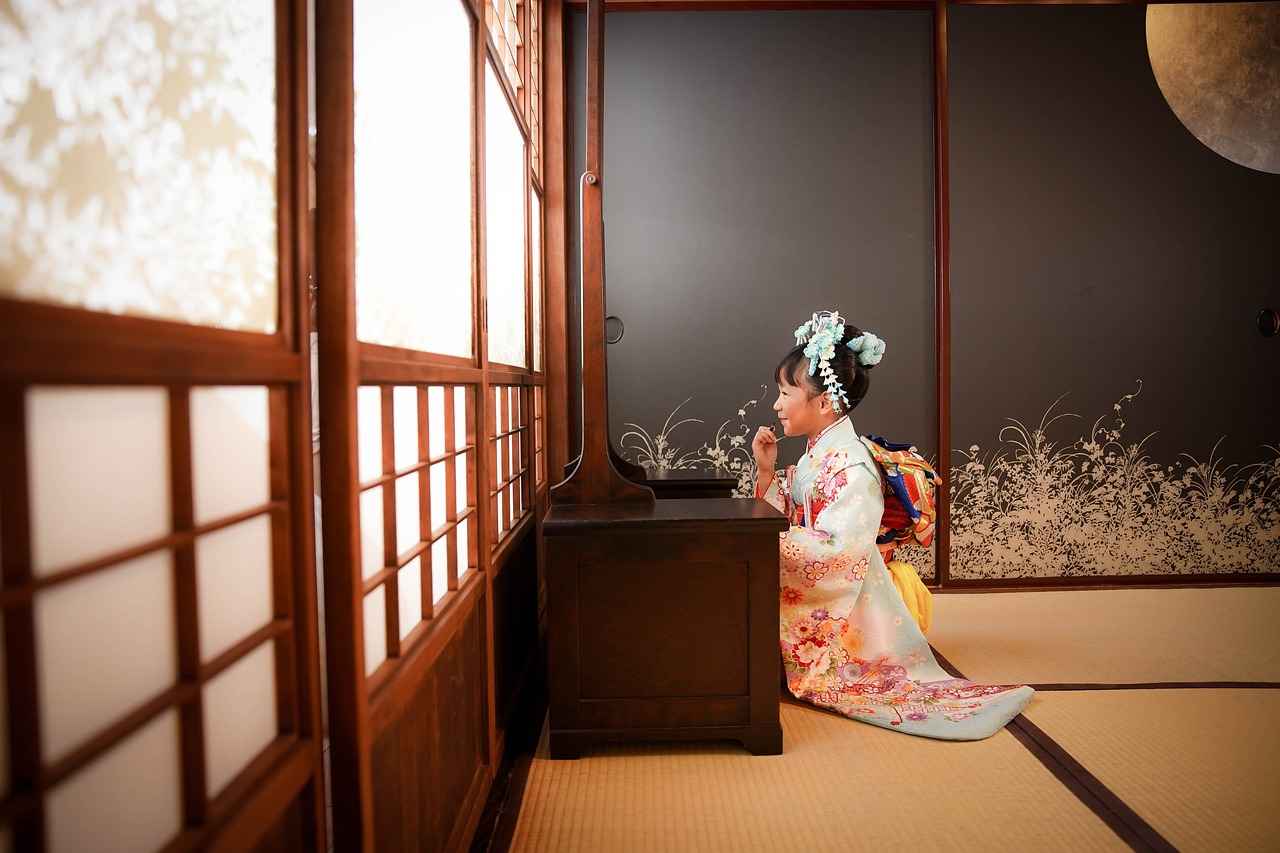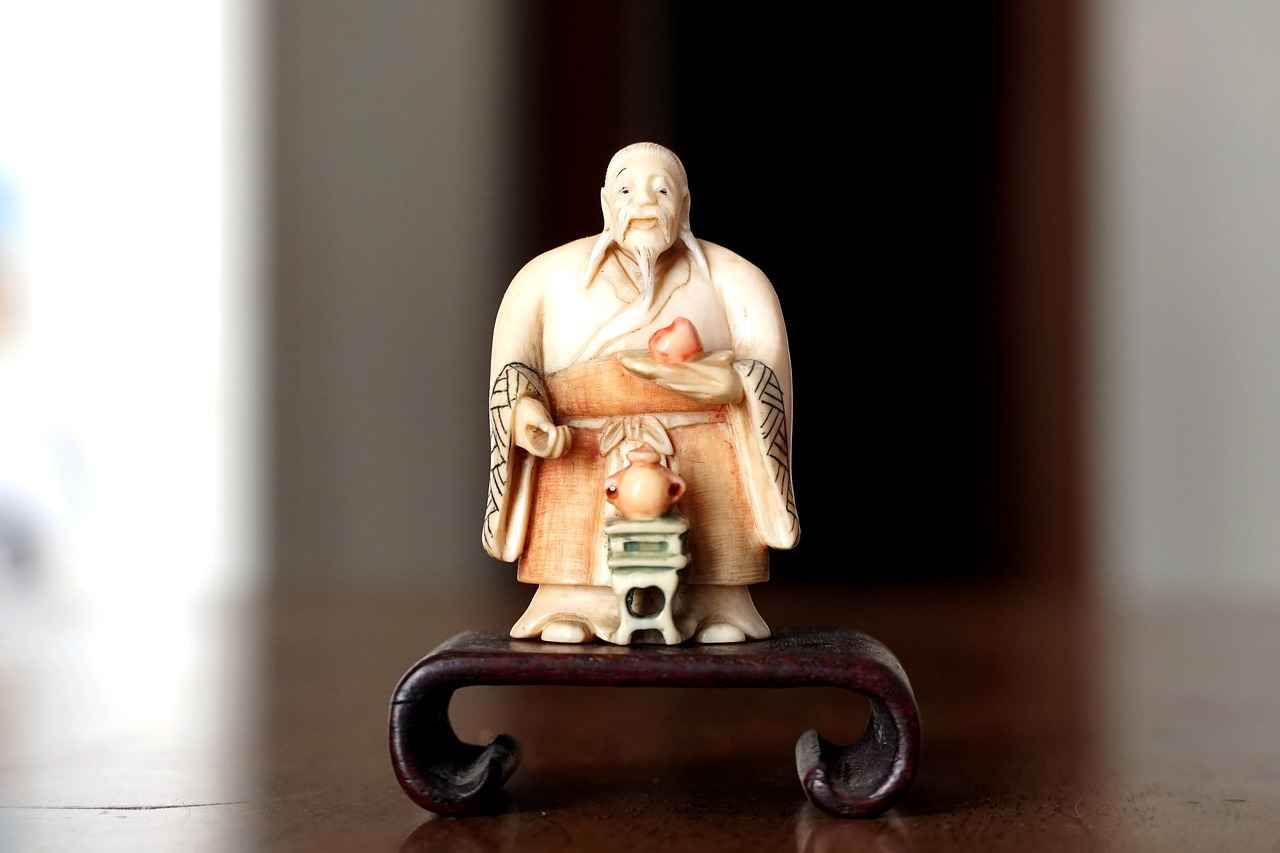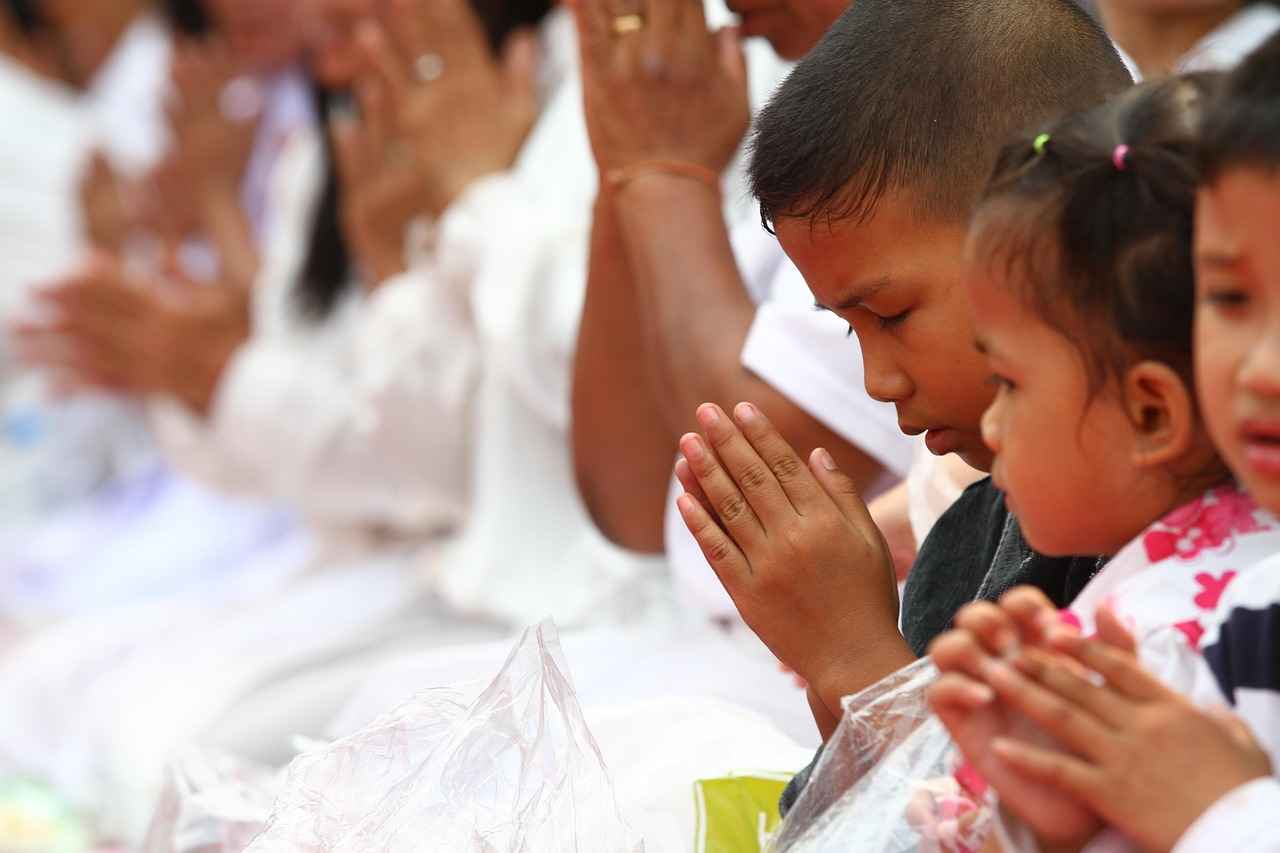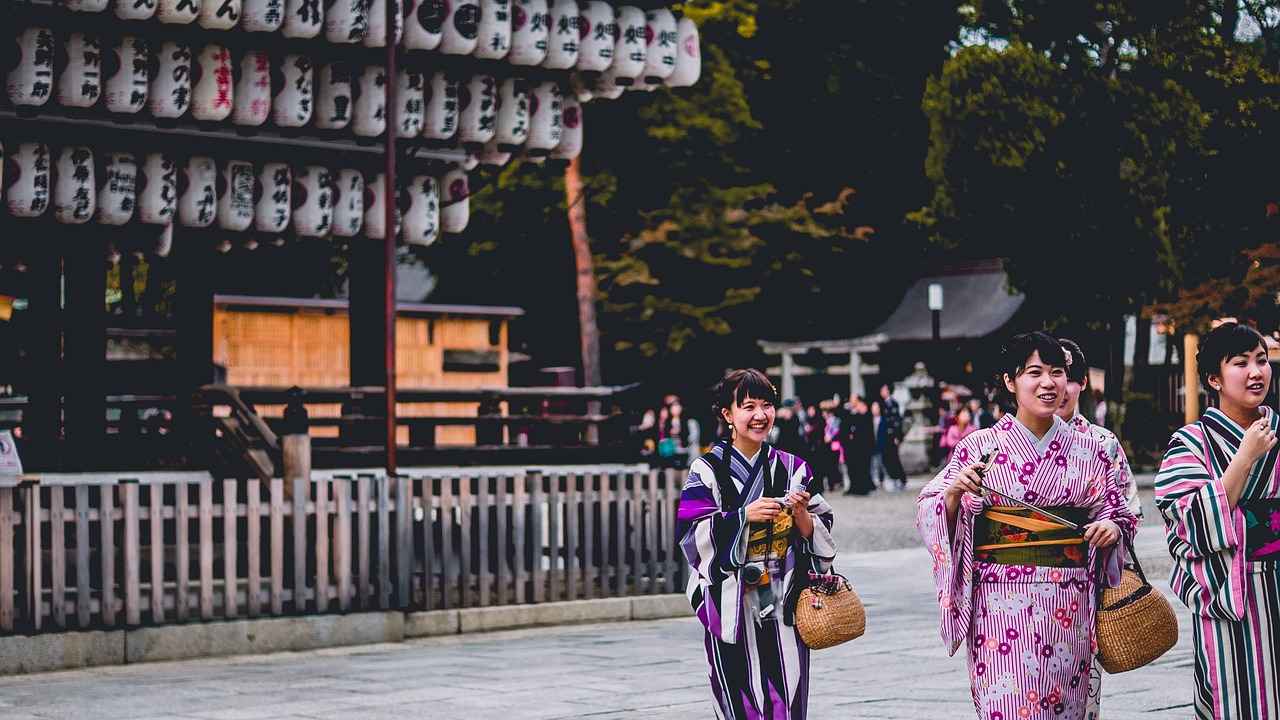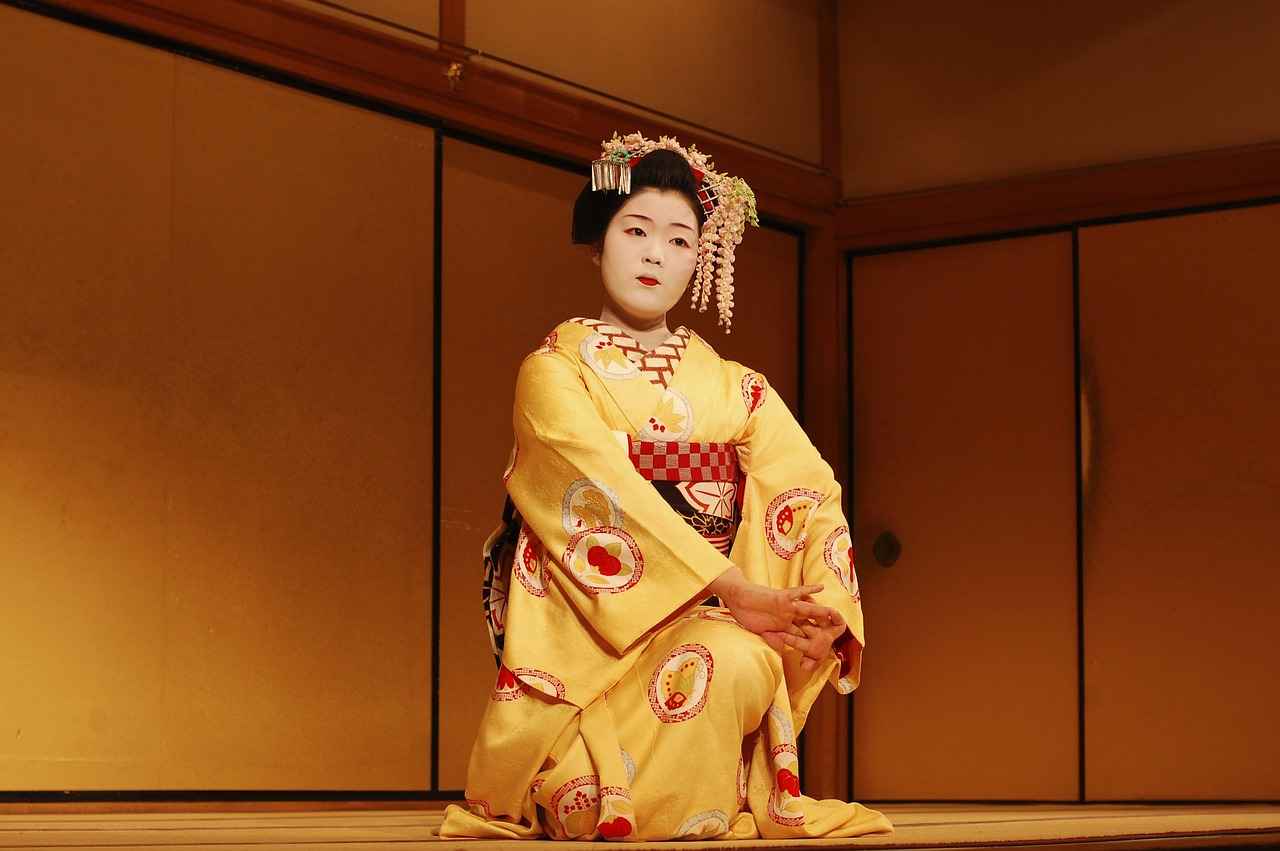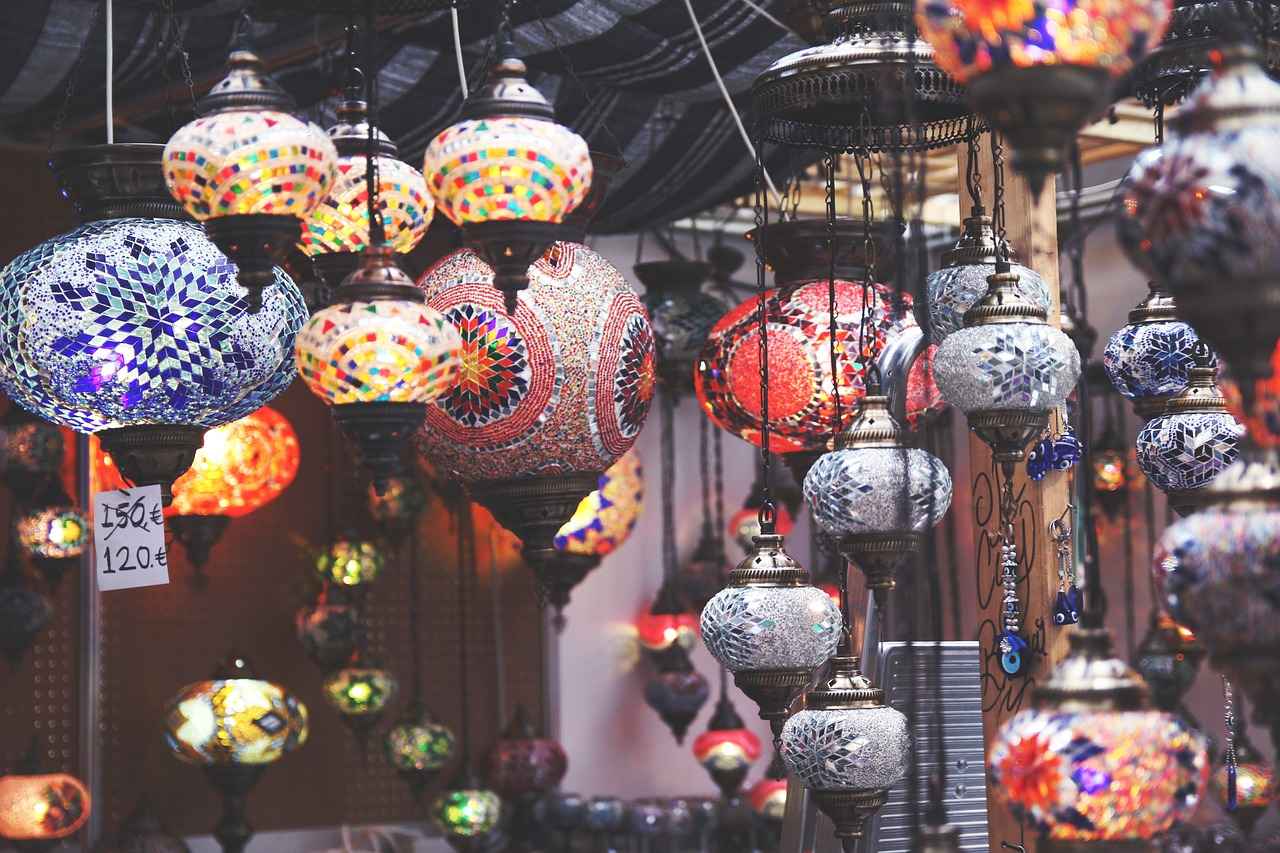This article delves into the rich history, intricate designs, and cultural significance of the Japanese kimono, highlighting its enduring legacy and modern interpretations in today’s fashion world.
History of the Kimono
The kimono’s origins can be traced back to ancient Japan, with its design evolving through various historical periods. Initially, the kimono served as a practical garment, but over centuries, it transformed into a symbol of cultural identity and artistic expression. Understanding its historical context provides valuable insight into its cultural importance and transformation over the years.
Types of Kimono
Kimonos are diverse, with various styles tailored for different occasions. From formal wear to casual attire, each type reflects unique craftsmanship and cultural significance, showcasing the diversity within this traditional garment.
- Formal Kimonos: These include the furisode and tomesode, worn during significant life events. Their elaborate designs symbolize status and celebration, making them essential in traditional ceremonies.
- Casual Kimonos: Casual styles like the yukata are favored for everyday wear and summer festivals, characterized by their lightweight fabric and vibrant patterns.
Kimono Fabrics and Patterns
The choice of fabric and patterns plays a crucial role in kimono design. From silk to cotton, each material offers different aesthetics and feels, contributing to the overall beauty of the garment.
- Silk Kimonos: Associated with luxury, silk kimonos feature intricate dyeing techniques that elevate their status for formal occasions.
- Cotton Kimonos: Typically worn during summer festivals, cotton kimonos are comfortable and showcase playful patterns, embodying the spirit of Japanese culture.
The Art of Kimono Wearing
Wearing a kimono involves a detailed process, from selecting the right style to mastering the art of tying the obi. Understanding these elements enhances appreciation for this traditional attire.
- Choosing the Right Kimono: Selecting the appropriate kimono reflects personal taste and adherence to cultural norms, emphasizing the significance of context.
- Obi Tying Techniques: The obi, a wide belt, is essential to kimono attire. Mastering various tying techniques adds flair to the overall look.
Modern Interpretations of Kimono
The kimono has evolved in contemporary fashion, blending traditional elements with modern aesthetics. Designers worldwide are reimagining this classic garment, making it relevant for today’s fashion landscape.
- Kimono in Street Fashion: Incorporating kimonos into street fashion allows for creative expression, merging traditional styles with urban influences.
- Global Influence of Kimono: The global fascination with the kimono highlights its universal appeal and the appreciation for Japanese craftsmanship.
Conclusion: The Timeless Appeal of Kimono Culture
The kimono remains a symbol of Japan’s rich cultural heritage, embodying elegance and artistry. Its enduring legacy continues to inspire and captivate, ensuring that this beautiful tradition thrives in modern society.
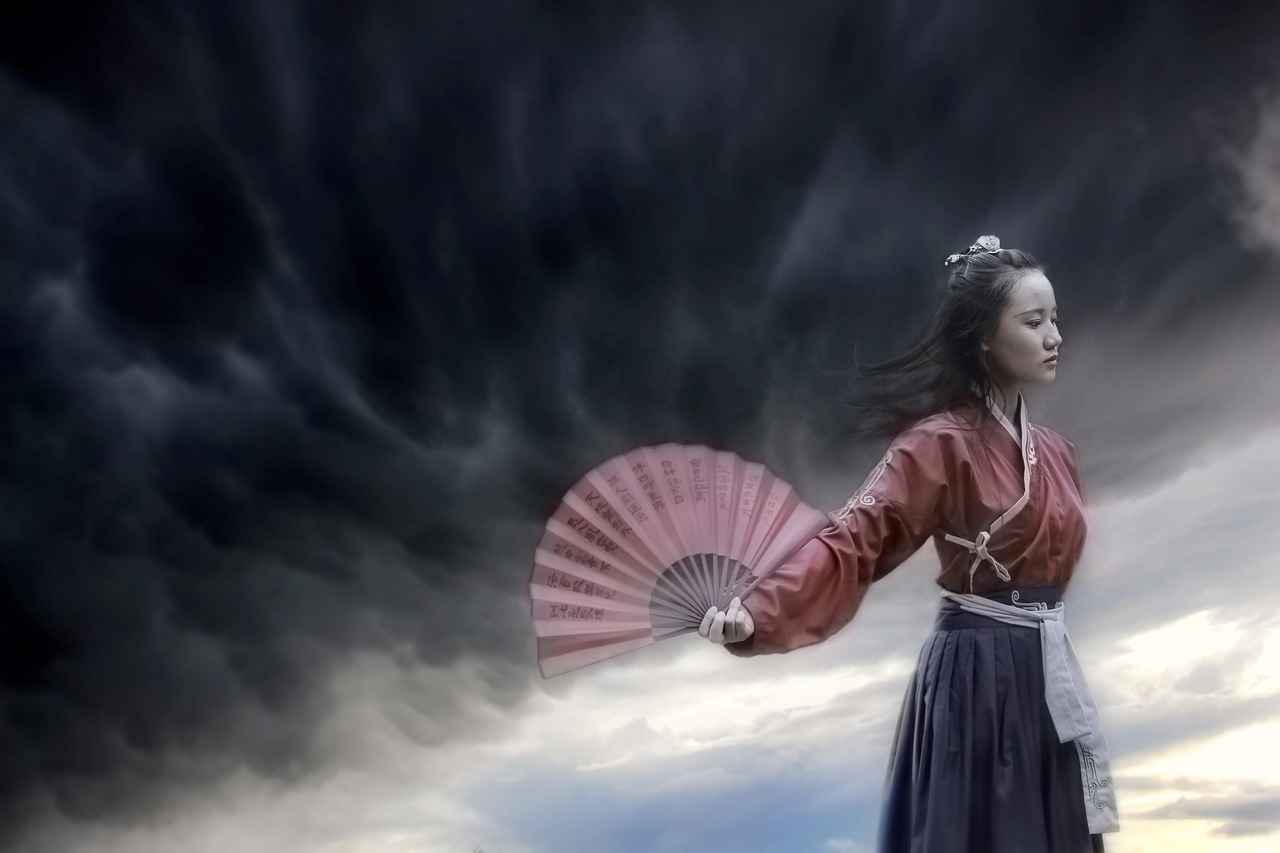
History of the Kimono
The Beauty and Elegance of the Japanese Kimono Culture
The kimono, a traditional garment of Japan, holds a significant place in the cultural tapestry of the nation. Its history is as rich and intricate as its designs, tracing back to the Heian period (794-1185). Originally, the kimono was a simple, utilitarian garment, but as time progressed, it evolved into a symbol of status and artistry.
Throughout the centuries, the kimono has undergone numerous transformations, influenced by the changing social and political landscapes of Japan. During the Edo period (1603-1868), for instance, the kimono became a canvas for artistic expression, with elaborate patterns and colors reflecting the wearer’s social standing and personal taste. The introduction of new dyeing techniques and fabrics, such as silk, further enhanced its appeal, making it a staple in both everyday life and formal occasions.
Understanding the historical context of the kimono allows us to appreciate its cultural significance. It is not merely a garment but a representation of Japanese identity and heritage. The kimono is often worn during important life events, such as weddings and ceremonies, symbolizing respect for tradition and family.
In contemporary Japan, while Western clothing dominates daily wear, the kimono retains its importance during special occasions. Modern designers have also begun to reinterpret the kimono, blending traditional elements with contemporary fashion trends. This fusion has led to a renewed interest in kimonos among younger generations, ensuring that this beautiful garment continues to evolve while honoring its rich history.
In conclusion, the kimono’s journey from a simple piece of clothing to a profound cultural symbol reflects the dynamic history of Japan itself. Its enduring legacy serves as a reminder of the importance of tradition in a rapidly changing world.
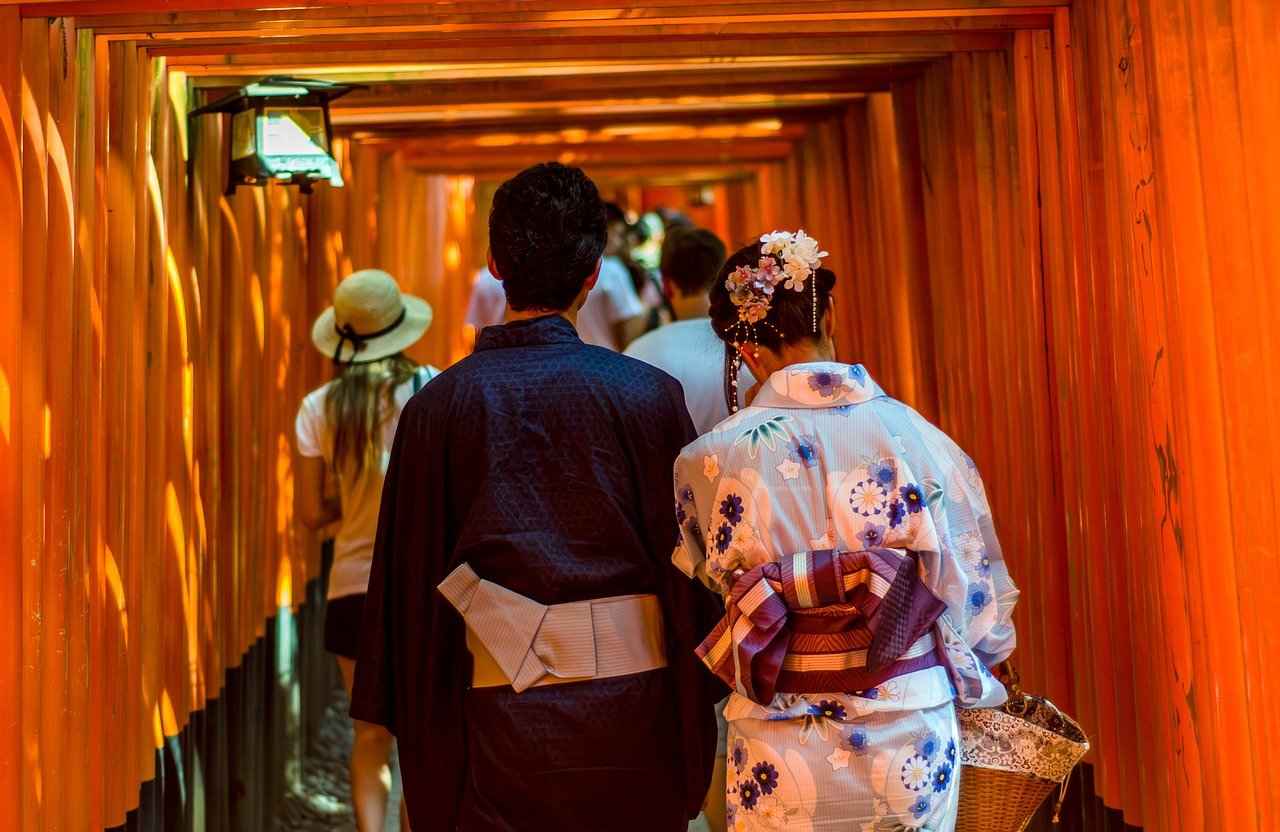
Types of Kimono
The kimono is a profound symbol of Japanese culture, representing not only fashion but also a rich history steeped in tradition. When exploring the , it becomes evident that each style serves a specific purpose and occasion, reflecting the artistry and cultural significance inherent in this traditional garment.
From formal ceremonies to casual outings, the diversity of kimonos showcases the intricate craftsmanship that has been passed down through generations. Below, we delve into the various types of kimonos, highlighting their unique characteristics and the occasions for which they are best suited.
- Formal Kimonos: These kimonos are worn during significant life events such as weddings, tea ceremonies, and formal gatherings. They are often characterized by elaborate designs and rich colors that symbolize status and celebration.
- Furisode: This style features long sleeves and is traditionally worn by young, unmarried women. The vibrant colors and intricate patterns of the furisode reflect a youthful spirit and cultural heritage.
- Tomesode: In contrast, the tomesode is a formal kimono for married women. Typically adorned with more subdued colors and elegant patterns, it signifies maturity and is often worn at weddings and formal events.
- Casual Kimonos: Casual styles, such as the yukata, are popular for everyday wear and summer festivals. Made from lightweight cotton, these kimonos are comfortable and often feature bright, playful patterns.
Each type of kimono not only serves a practical purpose but also tells a story, embodying the cultural values and artistic expressions of Japan. Understanding these distinctions enhances our appreciation for this beautiful garment and its role in Japanese society.
Formal Kimonos
hold a significant place in Japanese culture, particularly during important life events. These exquisite garments, including the furisode and tomesode, are not just clothing; they are symbols of tradition, status, and celebration. Each kimono is crafted with meticulous attention to detail, showcasing elaborate designs and vibrant colors that reflect the wearer’s personality and social standing.
The furisode is a striking formal kimono characterized by its long, flowing sleeves. Traditionally worn by young, unmarried women, it is often seen at celebrations such as weddings and graduations. The vibrant colors and intricate patterns of the furisode symbolize youth and vitality, making it a favorite choice for significant life milestones.
In contrast, the tomesode is designed for married women and features shorter sleeves and more subdued colors. This formal kimono is often adorned with elegant motifs that convey a sense of maturity and sophistication. It is typically worn at formal gatherings, including weddings and family celebrations, where it signifies the wearer’s status and role within the family.
| Type of Kimono | Characteristics | Occasions |
|---|---|---|
| Furisode | Long sleeves, vibrant colors, intricate patterns | Weddings, graduations, celebrations |
| Tomesode | Shorter sleeves, subdued colors, elegant designs | Formal gatherings, weddings, family events |
Both types of formal kimonos require careful consideration when selecting fabrics and patterns. The choice of material, such as luxurious silk for the furisode or elegant yet understated fabrics for the tomesode, plays a crucial role in the overall aesthetic and cultural significance of the garment.
In summary, formal kimonos are more than just traditional attire; they embody the essence of Japanese culture and heritage. Their elaborate designs and rich symbolism make them essential for celebrating life’s most important events, ensuring that these beautiful garments continue to be cherished across generations.
Furisode
The is a stunning element of Japanese culture, renowned for its long, flowing sleeves and vibrant designs. Traditionally worn by young, unmarried women, this exquisite garment is a symbol of youth and celebration, often seen during significant events such as weddings, coming-of-age ceremonies, and festivals.
Characterized by its elaborate patterns and bright colors, the furisode reflects not only the individuality of the wearer but also the rich tapestry of Japanese cultural heritage. The intricate designs often feature motifs that symbolize good fortune, happiness, and the beauty of nature, making each piece unique and meaningful.
One of the most captivating aspects of the furisode is its cultural significance. Wearing this kimono style is not just about fashion; it is a rite of passage for young women, marking their transition into adulthood. This garment allows them to express their personality and embrace their cultural identity during important life milestones.
Moreover, the furisode is often paired with a beautifully crafted obi, which is a wide belt that adds elegance and structure to the outfit. Mastering the art of obi tying is essential, as it can dramatically change the overall look and feel of the kimono. Various tying techniques, such as the otaiko and fukura suzume, showcase the skill and artistry involved in kimono dressing.
In recent years, the furisode has also found its way into modern fashion, inspiring designers to create contemporary interpretations that blend traditional aesthetics with modern styles. This fusion not only keeps the spirit of the furisode alive but also introduces it to younger generations, ensuring its legacy continues.
In conclusion, the is more than just a garment; it is a vibrant expression of Japanese culture and tradition. Its beauty, elegance, and significance make it a cherished piece of attire that will continue to captivate and inspire for years to come.
Tomesode
is a traditional Japanese kimono that holds a significant place in the cultural heritage of Japan. This formal garment is specifically designed for married women and is characterized by its elegant and understated aesthetics. Unlike the vibrant and playful furisode, which is worn by young, unmarried women, the tomesode reflects a sense of maturity and sophistication.
The color palette of the tomesode tends to be more subdued, often featuring dark hues like black or deep navy, adorned with intricate yet refined patterns. These designs typically include motifs that symbolize good fortune, such as cranes, cherry blossoms, and pine trees. The choice of patterns not only enhances the beauty of the kimono but also conveys cultural meanings and auspicious messages.
Worn during significant life events, the tomesode is a staple at formal gatherings, including weddings, tea ceremonies, and other celebratory occasions. Its presence at such events underscores the importance of tradition in Japanese society, where attire plays a crucial role in expressing respect and honor.
One of the defining features of the tomesode is the obi, a wide belt that cinches the waist and adds an extra layer of elegance to the overall look. The way the obi is tied can vary, with different styles symbolizing various cultural meanings and levels of formality. Mastering the art of wearing a tomesode, including the correct obi tying techniques, is essential for preserving the beauty and integrity of this traditional garment.
In conclusion, the tomesode is more than just a piece of clothing; it is a representation of Japanese culture, tradition, and the passage of time. Its elegant designs and rich symbolism make it a cherished garment for married women, allowing them to celebrate their heritage while embracing their roles within society.
Casual Kimonos
are an integral part of Japanese culture, especially during the warmer months. Among these, the yukata stands out as a favored choice for both everyday wear and festive occasions. Made from lightweight cotton, yukatas are designed to provide comfort and breathability, making them ideal for hot summer days.
The vibrant patterns and colors of casual kimonos reflect the beauty of nature and traditional Japanese aesthetics. From floral motifs to geometric designs, each yukata tells a story and showcases the artistry involved in its creation. These eye-catching designs make yukatas not just a clothing item but a canvas for cultural expression.
During the summer festivals, known as hanabi taikai, yukatas are commonly worn by both men and women. The casual nature of these kimonos allows for ease of movement, which is perfect for enjoying the festivities, including fireworks displays and traditional games. Pairing a yukata with a haneri (a decorative collar) and an obi (a wide belt) adds a touch of elegance, making it suitable for various occasions.
Moreover, casual kimonos have transcended their traditional roots, finding a place in modern fashion. Designers worldwide are incorporating elements of the yukata into contemporary clothing, appealing to a broader audience. This fusion of styles not only preserves the cultural significance of the kimono but also introduces it to new generations.
In conclusion, casual kimonos, particularly the yukata, embody a blend of comfort, style, and cultural heritage. Their lightweight fabric and vibrant patterns make them a versatile choice that resonates with both traditional values and modern aesthetics. As they continue to evolve, casual kimonos remain a cherished symbol of Japanese culture, celebrated during summer festivities and embraced in everyday life.
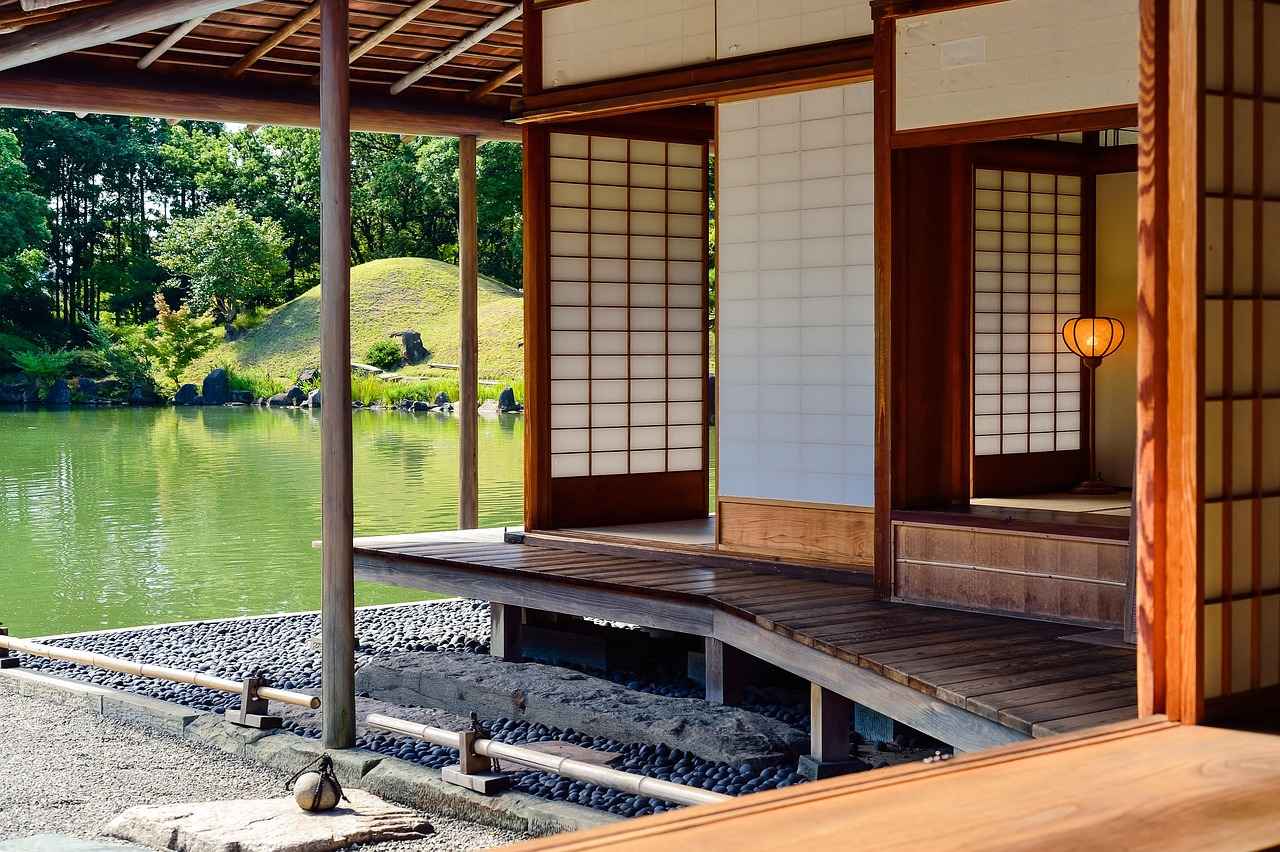
Kimono Fabrics and Patterns
The choice of fabric and patterns is a fundamental aspect of kimono design, influencing not only the garment’s aesthetic appeal but also its cultural significance. Each material used in a kimono carries its own history and meaning, contributing to the overall beauty and functionality of this traditional attire.
When it comes to kimono fabrics, silk is often regarded as the most luxurious option. Its natural sheen and smooth texture create an elegant appearance that is perfect for formal occasions. Silk kimonos are typically adorned with intricate patterns that may include traditional motifs such as cherry blossoms or cranes, symbolizing beauty and longevity. The dyeing techniques used on silk can be quite elaborate, adding depth and vibrancy to the designs.
In contrast, cotton kimonos, such as the popular yukata, are favored for their comfort and practicality. These lightweight garments are ideal for summer festivals and casual outings. The cotton fabric allows for breathability, making it a preferred choice during warmer months. Yukatas often feature bright, playful patterns, reflecting the lively spirit of Japanese culture and seasonal celebrations.
The patterns on kimonos are just as significant as the fabrics themselves. Each design tells a story and can denote various meanings based on cultural traditions. For instance, asanoha (hemp leaf) patterns symbolize growth and resilience, while seigaiha (blue ocean waves) represents peace and good fortune. The choice of pattern can also indicate the wearer’s age, marital status, and the occasion for which the kimono is worn.
In conclusion, the selection of fabric and pattern in kimono design is not merely a matter of aesthetics; it is deeply intertwined with cultural values and personal expression. Understanding these elements enhances appreciation for the craftsmanship involved in creating such a timeless garment.
Silk Kimonos
are not just garments; they are a celebration of Japanese heritage and artistry. Renowned for their luxurious feel and striking appearance, silk kimonos have become synonymous with elegance and sophistication. The shimmering texture of silk, combined with traditional dyeing techniques, creates a visual spectacle that is hard to replicate. This makes silk kimonos a preferred choice for formal occasions such as weddings, tea ceremonies, and other significant cultural events.
The intricate designs found on silk kimonos often tell a story, reflecting the rich tapestry of Japanese culture. From floral motifs to abstract patterns, each kimono is a unique piece of art. The dyeing methods, such as yuzen and shibori, are traditional techniques that enhance the garment’s beauty. These methods require a high level of skill and precision, further elevating the status of silk kimonos.
In addition to their aesthetic appeal, silk kimonos also carry a cultural significance. They are often passed down through generations, serving as heirlooms that connect families to their cultural roots. Wearing a silk kimono is not just about fashion; it is about embracing a legacy and honoring traditions.
Moreover, the versatility of silk kimonos is noteworthy. While they are primarily associated with formal wear, modern interpretations have seen them incorporated into casual outfits and street fashion. This adaptability allows for a broader appreciation of the kimono, making it relevant in today’s fashion landscape.
In conclusion, silk kimonos represent the epitome of luxury and elegance in Japanese culture. Their intricate designs, rich history, and cultural significance make them not only a beautiful garment but also a symbol of tradition and artistry that continues to thrive in modern society.
Cotton Kimonos
, particularly the yukata, are cherished for their comfort and breathability, making them an ideal choice for warm weather. Traditionally worn during summer festivals, these garments are a celebration of vibrant colors and playful patterns, reflecting the essence of Japanese culture.
The yukata, a casual form of kimono, is typically made from cotton, which allows for easy wear and maintenance. Its lightweight fabric helps to keep the wearer cool during the hot summer months, making it a popular choice not only for festivals but also for casual outings and hot spring visits. The design of yukata often features floral motifs, geometric patterns, and other symbols that hold cultural significance, enhancing its appeal.
During summer festivals, individuals don yukata to partake in traditional activities such as fireworks displays, bon odori dances, and various food stalls. The vibrant hues and lively designs of these kimonos create a festive atmosphere, allowing wearers to express their personal style while honoring their heritage. Many people accessorize their yukata with a haneri (collar) and a colorful obi (belt), adding to the overall aesthetic and cultural presentation.
In addition to their aesthetic value, cotton kimonos like the yukata also embody a sense of freedom and relaxation. They are often worn in the comfort of one’s home during summer evenings, providing a cozy yet stylish option for leisure. As the world embraces more casual and comfortable clothing, the yukata stands out as a timeless piece that connects modern wearers to their cultural roots.
In conclusion, cotton kimonos such as the yukata are not just garments; they are a vibrant expression of Japanese culture and tradition. Their comfort, breathability, and beautiful designs make them a staple during the summer, embodying the spirit of celebration and community.
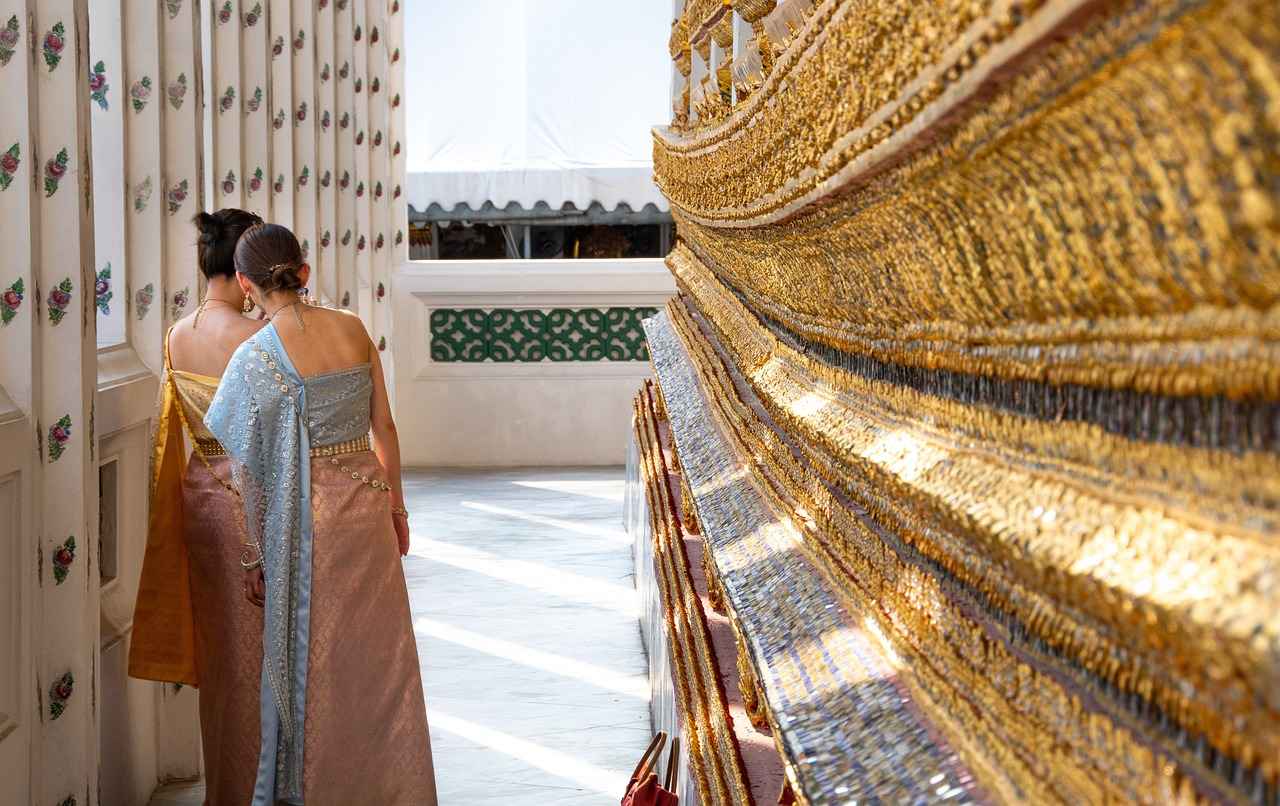
The Art of Kimono Wearing
is a fascinating journey that delves into the intricate traditions and techniques involved in donning this iconic Japanese garment. The kimono, a symbol of Japan’s rich cultural heritage, is not merely clothing; it is an art form that reflects the wearer’s personality, occasion, and adherence to cultural norms.
Wearing a kimono involves a detailed process, starting with choosing the right style that aligns with the event’s formality and the wearer’s personal taste. Each kimono type, whether it be a formal tomesode or a casual yukata, carries its own significance and aesthetic appeal. Understanding these nuances is essential for anyone looking to appreciate this traditional attire fully.
The next crucial step is selecting the appropriate accessories. The obi, a wide belt that secures the kimono, is not just functional; it is a centerpiece that can transform the overall look. There are various obi tying techniques, such as the otaiko and bunko, each adding a distinct flair and sophistication to the outfit. Mastering these techniques requires practice and an understanding of the garment’s structure.
| Accessory | Function | Style |
|---|---|---|
| Obi | Secures the kimono | Varies by occasion |
| Obijime | Decorative cord | Complements the obi |
| Obiage | Fabric under the obi | Enhances elegance |
Moreover, the layering techniques used in kimono wearing enhance both comfort and aesthetics. The haneri, a collar worn under the kimono, adds a touch of color and style, while the koshihimo, a thin cord, helps secure the layers in place. Understanding how to layer these elements can elevate the overall appearance and ensure that the kimono is worn correctly.
In conclusion, the art of kimono wearing is a blend of tradition, skill, and personal expression. By mastering the various aspects of this process, individuals not only honor the rich history behind the kimono but also contribute to its ongoing legacy in contemporary society. Whether for a formal ceremony or a casual gathering, the kimono remains a timeless garment that encapsulates the beauty and elegance of Japanese culture.
Choosing the Right Kimono
is a crucial aspect of embracing Japanese culture and tradition. Each kimono serves a unique purpose, and understanding the nuances of color, pattern, and style can greatly enhance the experience of wearing this beautiful garment. This article will guide you through the essential elements to consider when selecting the perfect kimono for any occasion.
- Understanding Colors: The color of a kimono often conveys specific meanings and emotions. For instance, red symbolizes happiness and good fortune, while blue represents calmness and stability. When selecting a kimono, consider the occasion and the message you wish to convey.
- Patterns and Designs: Kimono patterns can range from intricate florals to bold geometric shapes. Each design tells a story and reflects the wearer’s personality. Traditional patterns, such as asanoha (hemp leaf) or seigaiha (blue ocean waves), are often chosen for formal events, while playful motifs may be more suitable for casual outings.
- Styles for Different Occasions: Kimonos vary in style depending on the event. For formal occasions, opt for a furisode or tomesode, which are designed with elaborate details. In contrast, a yukata is ideal for summer festivals and casual gatherings, offering comfort and breathability.
Moreover, the choice of fabric is essential. Silk kimonos are known for their luxurious feel and are often reserved for significant events, while cotton kimonos are perfect for everyday wear.
In conclusion, selecting the right kimono involves a thoughtful consideration of colors, patterns, styles, and fabrics. By understanding these elements, you can choose a kimono that not only reflects your personal taste but also honors the rich cultural traditions of Japan.
Obi Tying Techniques
are an essential aspect of kimono wearing, offering both functionality and aesthetic appeal. The obi, a wide belt, serves to secure the kimono in place while also adding a decorative element that enhances the overall look. Mastering various obi tying techniques is crucial for anyone looking to wear a kimono with elegance and style.
Among the most popular obi tying techniques are the otaiko and bunko styles. Each technique has its own unique characteristics and occasions for use, making them integral to the art of kimono dressing.
- Otaiko: This style creates a large, flat bow at the back, resembling a drum. It is commonly used for formal occasions, making it a favorite among those attending weddings or traditional ceremonies. The otaiko knot is known for its elegance and simplicity, allowing the kimono’s intricate patterns to shine.
- Bunko: The bunko style features a more playful, layered bow, often with additional decorations. This technique is suitable for casual wear or festive occasions, such as summer festivals. The bunko knot brings a sense of joy and vibrancy to the outfit, making it a popular choice among younger kimono wearers.
Learning these techniques requires practice and patience. Many enthusiasts seek guidance from experienced kimono dressers or attend workshops to perfect their skills. The process not only enhances the beauty of the kimono but also deepens one’s appreciation for this traditional garment.
In conclusion, mastering is essential for anyone wishing to embrace the elegance of kimono culture. Whether opting for the refined otaiko or the lively bunko, each knot tells a story and adds a personal touch to the attire. The art of tying the obi is not just about securing the kimono; it’s about embodying the rich heritage and aesthetic values of Japan.

Modern Interpretations of Kimono
The kimono has undergone a remarkable transformation in the realm of contemporary fashion, seamlessly blending traditional elements with modern aesthetics. Designers from various corners of the globe are reimagining this classic garment, making it not only a symbol of cultural heritage but also a staple in the modern fashion landscape.
In today’s world, the kimono is no longer confined to traditional ceremonies and events. Instead, it has found its way into everyday wear, showcasing its versatility. Designers are experimenting with fabrics, patterns, and silhouettes, creating unique interpretations that appeal to contemporary tastes. For instance, the use of lightweight materials and vibrant colors has made the kimono a popular choice for summer festivals and casual outings.
- Street Style: The incorporation of kimonos into street fashion has become a significant trend, allowing for creative expression. Pairing a kimono with jeans or a casual dress exemplifies how this traditional garment can be adapted to suit modern lifestyles.
- High Fashion: Renowned designers are also embracing the kimono, showcasing it on international runways. This has led to a resurgence of interest in traditional Japanese aesthetics, with many collections featuring kimono-inspired silhouettes and intricate designs.
- Global Collaborations: The kimono’s influence extends beyond Japan, with collaborations between Japanese artisans and international brands. Such partnerships highlight the garment’s universal appeal and its ability to transcend cultural boundaries.
Furthermore, the kimono serves as a canvas for artistic expression. Many contemporary designers are incorporating digital prints and innovative dyeing techniques, allowing for a fusion of traditional craftsmanship and modern technology. This evolution not only preserves the essence of the kimono but also ensures its relevance in today’s fashion scene.
In conclusion, the evolution of the kimono in contemporary fashion reflects a deep respect for its heritage while embracing modernity. As designers continue to innovate and reinterpret this iconic garment, the kimono remains a vibrant symbol of cultural significance, bridging the gap between past and present.
Kimono in Street Fashion
has become a vibrant trend, captivating the attention of fashion enthusiasts around the globe. This unique fusion of traditional Japanese attire with contemporary styles not only showcases the versatility of the kimono but also highlights its ability to resonate with a younger audience seeking creative expression. As urban fashion evolves, the kimono has emerged as a canvas for individuality, allowing wearers to blend cultural heritage with modern aesthetics.
The incorporation of kimonos into street fashion offers a fresh perspective on how traditional garments can be reinterpreted. Fashion designers and influencers are experimenting with various fabrics, patterns, and layering techniques to create looks that are both stylish and respectful of the kimono’s rich history. For instance, pairing a kimono with casual jeans or a simple t-shirt creates a striking contrast, merging the elegance of the kimono with the relaxed vibe of streetwear.
| Style | Description |
|---|---|
| Layered Looks | Wearing a kimono over a fitted outfit adds depth and sophistication. |
| Accessorizing | Complementing kimonos with modern accessories like sneakers or statement jewelry enhances the overall aesthetic. |
| Pattern Mixing | Combining different patterns can create a bold, eye-catching ensemble. |
This trend not only promotes cultural appreciation but also encourages sustainable fashion practices. By reusing and repurposing traditional garments, individuals contribute to a more eco-friendly fashion industry. Furthermore, the rise of the kimono in street fashion has sparked a renewed interest in Japanese craftsmanship, inspiring a new generation to explore and celebrate their cultural roots.
In conclusion, the represents a dynamic intersection of tradition and modernity. As this trend continues to evolve, it serves as a reminder of the enduring beauty and adaptability of cultural garments, proving that fashion can be both a form of self-expression and a celebration of heritage.
Global Influence of Kimono
The Global Influence of Kimono
The kimono, a traditional Japanese garment, has transcended its cultural origins to become a global fashion icon. This cross-cultural exchange showcases not only the beauty of the kimono but also the increasing appreciation for Japanese artistry and craftsmanship around the world.
As the world becomes more interconnected, the kimono has found its way into various cultures, often adapted to fit local tastes and styles. This phenomenon highlights the universal appeal of the kimono, as designers and fashion enthusiasts from different backgrounds embrace its elegance and versatility. The intricate patterns and rich history associated with kimonos resonate with many, making them a source of inspiration for contemporary fashion.
One of the most notable aspects of the kimono’s global influence is its incorporation into modern streetwear. Many fashion designers have begun to experiment with kimono-inspired silhouettes, blending traditional elements with contemporary aesthetics. This fusion not only revitalizes the kimono but also introduces it to a younger audience, who may not be familiar with its cultural significance. The result is a vibrant mix of styles that pays homage to the past while embracing the future.
Furthermore, the kimono has become a symbol of cultural appreciation and respect. As international fashion weeks showcase collections featuring kimono elements, the dialogue surrounding cultural appropriation and appreciation has gained momentum. It is essential for designers and consumers alike to approach this garment with an understanding of its cultural roots, celebrating its beauty while honoring its history.
In conclusion, the kimono’s global influence is a testament to its timeless beauty and cultural significance. As it continues to inspire and evolve within various fashion landscapes, the kimono remains a cherished symbol of Japan’s rich heritage, inviting the world to explore and appreciate its artistry.
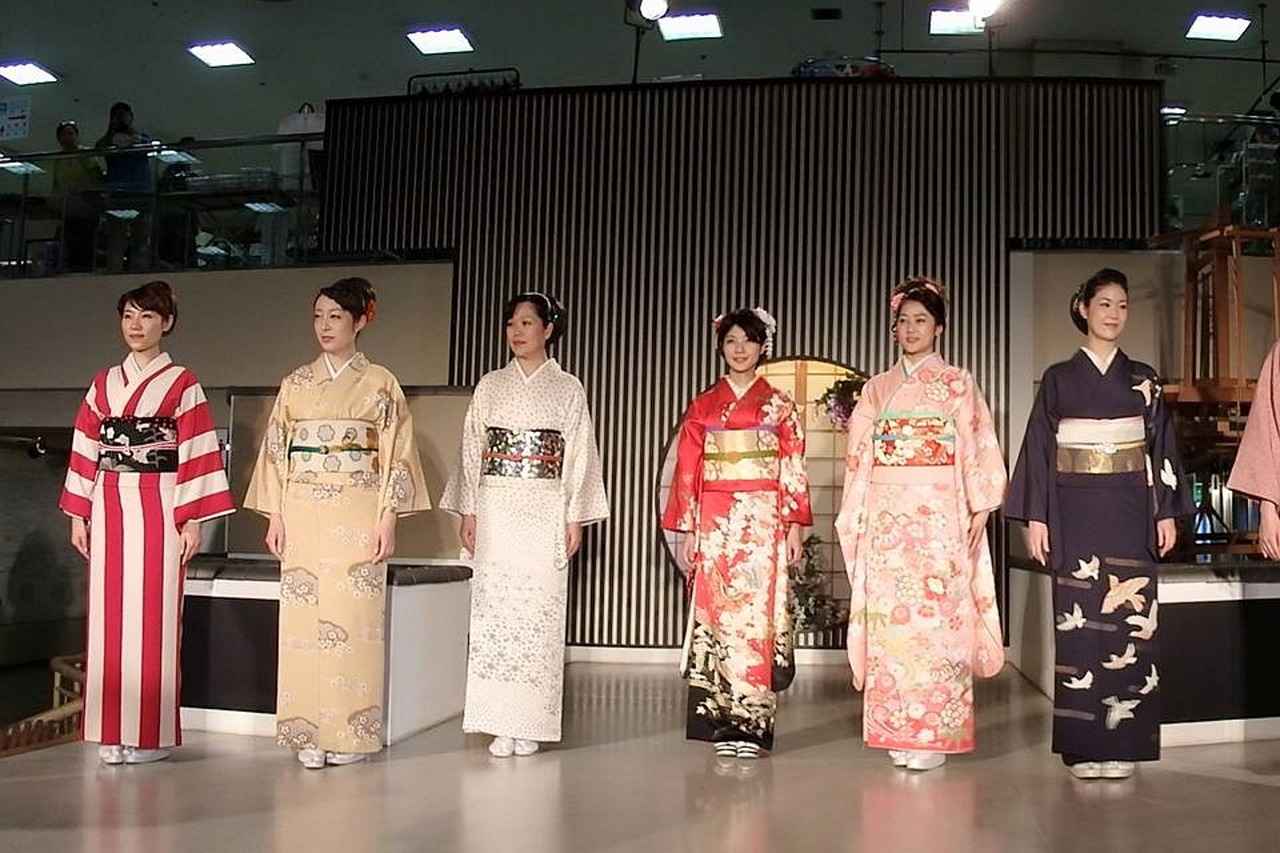
Conclusion: The Timeless Appeal of Kimono Culture
The Beauty and Elegance of the Japanese Kimono Culture
The kimono, a traditional garment of Japan, is not just a piece of clothing; it is a symbol of cultural heritage that encapsulates the nation’s history, artistry, and elegance. This exquisite attire has evolved over centuries, reflecting the changing times while maintaining its core essence. The intricate designs and vibrant colors of the kimono are a testament to the skill of artisans who dedicate their lives to this craft.
History of the Kimono
The origins of the kimono can be traced back to the Heian period (794-1185), where it began as a simple garment. Over time, it evolved into various styles and forms, influenced by social status, regional customs, and historical events. This evolution marks the kimono as a living artifact of Japanese culture.
Types of Kimono
- Formal Kimonos: These include the furisode and tomesode, often worn during significant life events such as weddings and ceremonies.
- Casual Kimonos: The yukata is a popular choice for summer festivals, made from lightweight cotton and featuring vibrant patterns.
Kimono Fabrics and Patterns
The fabric used in kimonos ranges from luxurious silk to comfortable cotton, each offering unique aesthetics. Silk kimonos are often adorned with intricate designs, while cotton kimonos are favored for their breathability and ease of wear.
The Art of Kimono Wearing
Wearing a kimono requires skill, from selecting the right style to mastering the art of obi tying. This attention to detail enhances the overall presentation and respect for the garment.
Modern Interpretations of Kimono
Today, the kimono is experiencing a renaissance in the fashion world. Designers are incorporating traditional elements into contemporary styles, making the kimono relevant for modern audiences. This blend of old and new not only preserves the cultural significance but also introduces it to a global audience.
The kimono remains a powerful symbol of Japan’s rich cultural heritage, embodying both elegance and artistry. Its enduring legacy continues to inspire and captivate people around the world, ensuring that this beautiful tradition thrives in contemporary society.
Frequently Asked Questions
- What is a kimono?
A kimono is a traditional Japanese garment characterized by its long sleeves and wrap-around design. It symbolizes Japan’s rich cultural heritage and is often worn during special occasions and ceremonies.
- What are the different types of kimonos?
Kimonos come in various styles, including formal kimonos like furisode and tomesode, and casual ones like yukata. Each type serves different occasions and reflects unique craftsmanship and cultural significance.
- How should I choose a kimono for an event?
Choosing a kimono involves considering the occasion, color, and pattern. It’s essential to select one that aligns with cultural norms and expresses your personal style, ensuring you feel comfortable and confident.
- What materials are kimonos made from?
Kimonos can be made from various fabrics, with silk being the most luxurious and cotton being popular for casual wear. Each material offers different aesthetics, contributing to the garment’s overall beauty and feel.
- Can I wear a kimono in modern fashion?
Absolutely! Kimonos have made a significant impact on modern fashion, blending traditional elements with contemporary styles. They are often incorporated into street fashion, showcasing their versatility and appeal to younger audiences.
